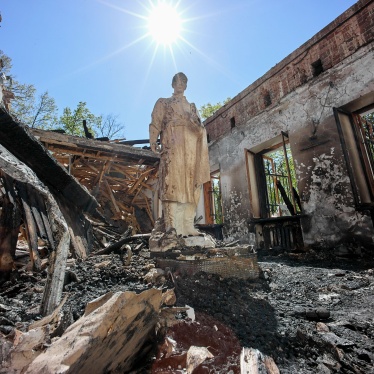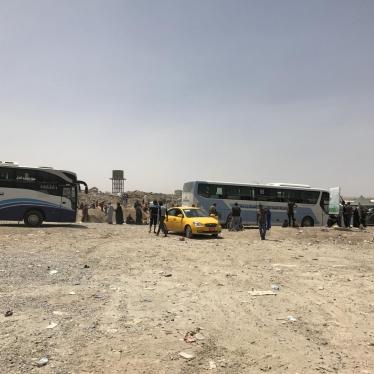Human Rights Watch welcomed Israel's announcement that it will investigate the June 9 tank shelling that killed three Palestinian Bedouin women.
Israel has acknowledged that it used flechette munitions in Gaza. Human Rights Watch urged Israel to expand the investigation to include an examination of the use of such anti-personnel weapons in dealing with Palestinian unrest, and asked for a public commitment by the Israeli government that such weapons will not be used in the future in or around populated areas.
"Anti-personnel weapons that have a large 'kill radius' must never be used in areas where civilians live," said Hanny Megally, executive director of the Middle East and North Africa division of Human Rights Watch. "While flechette ammunition is not banned under international law, its use in such circumstances is highly questionable since it raises risk of civilian casualties to a threshold that is intolerable under international law."
The three women, Selmiya al-Malalha, 37, Hekmat al-Malalha, 17, and Nasra al-Malalha, 61, were killed, and three other family members wounded when their tents were hit by 120 mm tank shells packed with thousands of steel darts. The al-Malalha clan lived in an area surrounded by populated villages about 1.5 km from the Netzarim settlement.
Salem Naji al-Malalha, 22, the husband of Hekmat, told Human Rights Watch that he had heard some shooting several hours earlier from the Shouhada [also known as Netzarim] Junction area, about 1.5 kilometers away. "About two hours later I heard a big explosion and felt the earth shake," he said. "The first shell exploded about four meters from the women's tent"- referring to the tent where his wife, mother-in-law, and sister-in-law were sitting. "The second and third shells fell fifty meters further away. I could see that the tent in which the women were staying was full of blood."
Salem's mother, who was in a tent with him, was wounded. "She was injured by three nails," he told Human Rights Watch. "They are not really nails. They look like small missiles. They are incredible, they made holes through the metal, they made holes in my water jugs and they even went through the cement."
On June 11, Prime Minister Ariel Sharon said that the killing of the three women "should not have happened." Israel Defense Forces (IDF) officials, who initially had said that troops were returning fire from the area, confirmed the next day that the shelling had been a mistake and said there would be an inquiry.
A 1996 study by Human Rights Watch, Civilian Pawns: Laws of War Violations and the Use of Weapons on the Israel-Lebanon Border, investigated the IDF's use of U.S.-supplied tank-fired flechette munitions in southern Lebanon. The IDF used these rather than other types of anti-personnel weapons in this conflict mainly for their ability to penetrate dense foliage, which is not characteristic of Gaza. The shells used in southern Lebanon contained ten to fourteen thousand 1.5 inch steel darts that, when released from the canister, spread out in an arc that had a maximum width of about ninety-four yards.
"Even if Palestinian gunmen fired from the vicinity of a populated area, Israel is not free from its obligation to minimize civilian casualties in returning fire," Megally said. "It is hard to see how the use of this weapon in this context can be consistent with international legal principles outlawing indiscriminate attacks."







